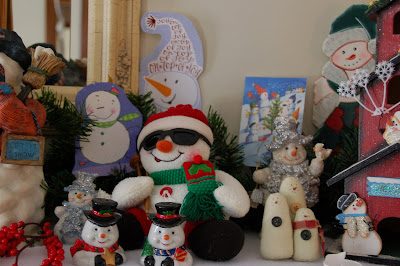
My grandmother, Maggie Hart, was terrified of gypsies. My sister Judy remembers when she was little that Grandma would worry herself sick if one of us was playing outside unsupervised, because the "gypsies" might steal us.
We lived out in the country in a time when gypsies really did travel from house to house peddling their homemade pots and pans. I've always thought of gypsies as being Romanian, but, in fact, there were several nationalies represented. Each of them specialized in different things. The Rom arrived in the United States from Serbia, Austria and Austria-Hungary in the late 1880s in the huge wave of immigration from Eastern Europe. They were coppersmiths, and in addition to home cookware, they also made equipment for bakeries, laundries, confectionries and other businesses. The Rom have also been credited with introducing the art of fortune-telling. I assume that this group was the one that my grandmother knew about.
The many different groups of gypsies, or travelers, included Black Dutch, Hungarian, Romnichels, Scottish and Irish travelers, and Ludar. You can read about them at The Gypsy Lore Society
In honor of the gypsies that my grandmother feared, I'm posting the recipe for this wonderful soup. I have no idea if it has roots in Hungary, but I do know it is delicious and we love it, especially with a good crusty bread.
HUNGARIAN MUSHROOM SOUP
3/4 cup chopped onion
2 tablespoons butter
12 oz. sliced fresh mushrooms
2 teaspoons dried dillweed
2 teaspoons Hungarian paprika
2 teaspoons minced garlic (4 cloves)
1/8 teaspoon fresh ground black pepper
3-14-ounce cans beef broth (5 /14 cups)
1 1/3 cups half-and-half (or whipping cream, if you dare)
1/2 cup all-purpose flour
2 tablespoons sour cream
1 tablespoon lemon juice
2 teaspoons soy sauce
1. In a 4-quart Dutch oven, cook onion in hot butter over medium heat for 5 minutes, stirring occasionally. Add mushrooms, dillweed, paprika, garlic and pepper. Cook for 4 to 5 minutes or until mushrooms are just tender, stirring occasionally. Stir in beef broth. Bring to boiling; reduce heat. Simmer, covered, 10 minutes.
2. Meanwhile, in a medium bowl, whisk together the half-and-half or whipping cream, flour, sour cream, lemon juice and soy sauce until smooth. Gradually whisk in about 1/2 cup of the hot mushroom mixture. Add all of the cream mixture to the remaining mushroom mixture in Dutch oven. Cook and stir until thickened and bubbly. Cook 1 minute more.
Note: This came from Midwest Living Magazine which got it from Sibley Station, a restaurant in Pequot Lakes, Minnesota.















































